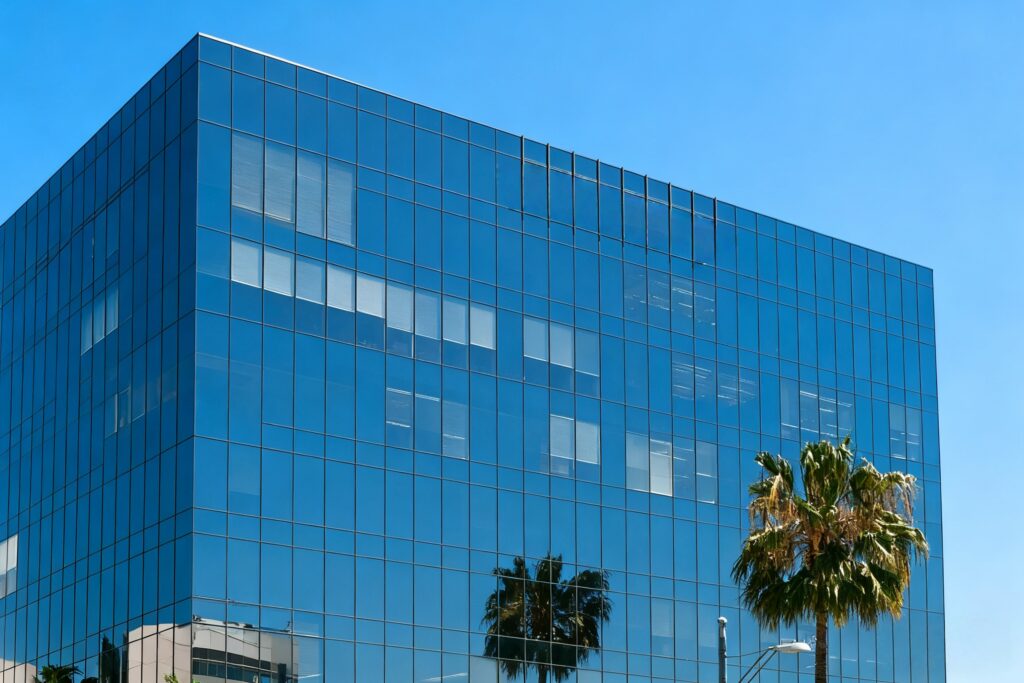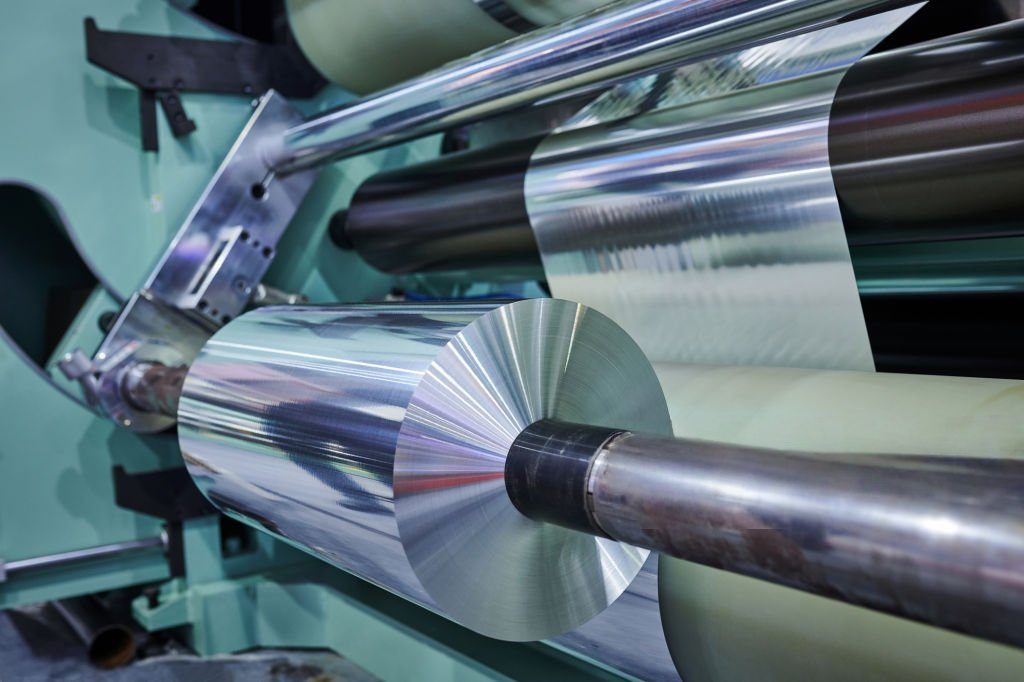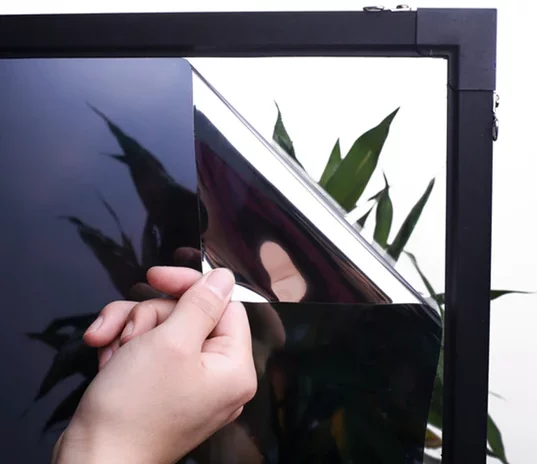
Understanding One Way Window Technology in Modern Architecture
One way window technology enables visibility from the inside while presenting a mirrored surface on the outside. The core optical principle is that one side of the glass or film appears bright and reflective while the other remains darker and transparent. When external light is stronger than internal light, the exterior side acts like a mirror and the interior side allows vision outward.
To achieve this effect manufacturers use a base substrate (glass or film) and apply a high-reflectance metallic layer. In retrofit film versions the base is a polyester (PET) substrate onto which a thin silver or aluminum layer is vacuum-deposited and overcoated with UV-stable protective layers. In structural one way glass the reflective layer is integrated in the glazing during manufacture. These materials also often include solar-control and UV-blocking features so they serve dual functions: privacy plus energy performance.
In commercial buildings the use of these systems has grown because they deliver three benefits at once: outward view, inward privacy, and improved facade performance. The aesthetics of a mirrored exterior can also elevate brand identity. As more companies pursue sustainability targets and occupant comfort, mirror film and one way glazing are becoming standard components of the building envelope.
What Is One Way Window Glass?
One way window glass is a factory-manufactured glazing product that embeds a reflective or half-mirror coating within the glass itself. The result is a fixed, structural solution — ideal for newly built properties or high-security areas where long life and minimal maintenance are priorities.
Why businesses choose one way window glass:
It offers a permanent, high-durability solution.
The optical performance is stable and designed for long service life.
It is suited to demanding applications: security control rooms, enterprise boardrooms, laboratories, bank branches.
It delivers the one-sided mirror effect as part of the glazing system.
Considerations:
It involves a higher initial investment and more complex installation compared to retrofit film.
It is less suited to existing buildings where minimal disruption is essential.
Because it is built in, upgrades or changes are more difficult.
From a facilities-management perspective the value of one way window glass lies in its long-term reliability and alignment with building life-cycle planning. If you are designing a new facility and expect 20-30 years of operation with minimal change, this type of glazing is very compelling. The manufacturing process typically uses vacuum deposition of metals, or sputtering, to create a layer that reflects a portion of light while transmitting the rest, giving a semi-transparent effect under controlled lighting conditions.
What Is Window Mirror Film?
Window mirror film, also called one way mirror film or one way window film, is a retrofit solution applied to existing glass surfaces. Instead of replacing the entire glazing unit, a specially engineered film is affixed to the interior face of the glass. This film carries a very thin metallic coating—typically aluminum, silver or an alloy—deposited onto or embedded within a polyester (PET) substrate.
The construction may include multiple layers: a clear polyester or PET base layer, the metalised reflective film layer, a protective scratch-resistant top coat, adhesive layers, and a liner. For example, some product data sheets list the film material as PET with an adhesive acrylic polymer, siliconised PET liner, and total thickness around 60 microns.
In operation the film works because the metal layer is thin enough to allow partial light transmission (so people on the darker side can still see out) while reflecting a high percentage of light from the brighter side (giving the mirrored appearance). The reflectivity and transmissivity ratio can be tuned by adjusting the thickness, composition and density of the metal layer.
Some high‐performance films deliver around 80-90% reflection with 10-20% visible light transmission.
Key Benefits
Rapid installation makes this solution appealing: a full floor or zone can often be completed in a day, reducing disruption.
Significantly lower cost compared to full glazing replacement—typical retrofit cost can be about 20% of the cost of installing new one way glass.
Energy performance advantages: the metalised film layer reduces solar heat gain, offers UV blockage, and reduces glare.
Flexibility: the film is removable or replaceable and does not require changing the full window unit or frame.
Important Practical Notes
The one-way mirror effect is highly dependent on lighting conditions. A strong brightness difference between the two sides (bright side = reflective mirror; darker side = see-through) is required. If the interior side becomes brighter than the exterior side, the effect will reverse and outside viewers may see in.
Manufacturing quality and installation are critical. Surface preparation of the glass, the adhesive quality, edge sealing, bubble elimination, correct film orientation and compatibility (for example glass vs polycarbonate) all affect longevity and visual performance.
For commercial buildings undergoing renovation or retrofit—such as office towers, retail chains, banks, hospitality projects—window mirror film offers a highly pragmatic route to achieve one-way privacy, branded exterior appearance and energy upgrade benefits, without the cost and downtime of full window replacement.
One Way Mirror Film vs One Way Glass Film – A Commercial Comparison
When comparing one way glass film (i.e., embedded coating glazing) and one way mirror film, the decision comes down to cost, installation impact, flexibility and return-on-investment.
| Evaluation Metric | One Way Window Glass | One Way Mirror Film |
| Capital Investment | High — treated as a long-term structural asset | Low — retrofit solution with minimal capital expenditure |
| Installation Impact | Requires full glass replacement; downtime for operations | Applied on-site with minimal business interruption |
| Deployment Speed | Weeks to complete, aligned with new build schedules | Typically completed within hours or days per floor |
| Optical & Privacy Performance | Fixed reflectivity and superior long-term stability | Adjustable reflectivity grades for different privacy or design needs |
| Energy Efficiency | Integrated thermal and solar control, permanent performance | Up to 82% solar heat rejection and 99% UV blocking; measurable energy savings within 12 months |
| Flexibility / Upgradeability | Permanent solution; upgrades require full glass replacement | Easy to replace, upgrade, or remove without altering structure |
| Maintenance Cost | Virtually none after installation | Low — may require replacement every 8–10 years depending on exposure |
| Aesthetic & Branding Options | Limited customization once installed | Multiple color tones and mirror levels to match corporate façade or branding |
| Project Suitability | Best for new construction, high-security, or government facilities | Ideal for existing commercial buildings, renovations, or fast corporate rollouts |
| ROI Cycle | Long-term (10–20 years); value tied to property lifecycle | Short-term (2–5 years); rapid return from privacy, comfort, and energy savings |
| Procurement Risk | Higher upfront commitment, long planning cycle | Lower financial risk and faster payback; flexible budget allocation |
For corporate facility teams and procurement decision-makers this table highlights the trade-offs. If the building is a long-term asset, newly constructed and budget allows, one way window glass may be preferred. If the building is already operational, retrofit is needed and cost control matters, one way mirror film is often the optimal choice.
Industry Applications of One Way Mirror Film and One Way Glass Film
There are numerous commercial scenarios where these technologies deliver value.
Office towers and corporate campuses deploy mirrored façades to build visual identity and control daylight.
Retail flagship stores and showrooms use window mirror film to create dramatic exterior reflections by day and showcase displays by night.
Bank branches and financial institutions require privacy for customers, yet transparency outward for branding and trust.
Security monitoring rooms, control rooms, interrogation suites make use of one way glass film or high-performance one way glazing for surveillance and confidentiality.
Hotels, healthcare and mixed-use buildings integrate these systems to improve occupant comfort, manage glare, protect furnishings and support sustainability objectives.
In all these applications the key pain points are privacy, operational downtime, facade uniformity, energy performance and brand image. The right glazing or film solution addresses those concerns directly.
Energy Efficiency and Sustainability Benefits of One Way Mirror Film
Beyond aesthetics and privacy the energy-performance benefits of one way mirror film are significant. High-reflectivity films can block more than 80% of solar heat gain and reduce glare by over 90%. They also filter up to 99% of UV radiation, protecting interior furnishings and equipment.
Reducing solar heat gain means lower cooling loads, more stable indoor temperatures and lower energy bills. For buildings with large glazed façades the savings translate into measurable ROI. These films also support green-building certification programs such as LEED, WELL and BREEAM. By improving building envelope performance and reducing HVAC load, one way mirror film becomes a strategic part of sustainable asset management.
Partner with Fancyfix for Enterprise Window Solutions
Fancyfix delivers enterprise-grade solutions for commercial clients. Our services include high-performance wholesale one way privacy window film and structural one way window glass systems tailored for privacy, efficiency and aesthetics.
Why choose Fancyfix:
Free project assessment and ROI modelling.
Fast installation with minimal business disruption.
Selection of reflection levels, finishes and performance options.
Materials that meet energy-efficiency and sustainability standards.
Ongoing service and support over the building life cycle.
If your facility team is exploring a glazing upgrade or retrofit for privacy, energy savings and brand impact, we invite you to contact our enterprise-projects team today. We will evaluate your building, review operational constraints and recommend the best path—whether that is one way mirror film or one way window glass or wholesale one way privacy window film—to enhance your building’s performance, comfort and appearance.
Reflective solutions such as one way mirror film, window mirror film, one way window film and one way glass film are more than attachments—they are strategic building-envelope technologies. Using the right product in the right scenario allows you to combine privacy, energy performance and design excellence. Whether you go with one way window glass for long-term stability or one way mirror film for rapid roll-out and retrofit savings, the result is a smarter, more efficient and visually compelling building.




